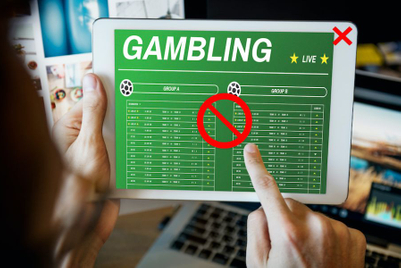
| PARTNER CONTENT |
Mobile devices are our personal headquarters. They are our link to our favourite people, our entertainment centres, and even sources of inspiration.
And when you think about all that gets done on a smartphone, it’s not just highly personal, but also governed by choice. The consumer is 100 percent in control. They choose what to take a picture of, what to say about it and with whom to share it. They decide where they are going sit down for a moment to play a game, which videos they want to watch and when to stop scrolling. They opt in to each experience.
That is why bad advertising on mobile is so painful. We have all experienced those irrelevant ads that pop up at the worst times, load slowly or freeze your phone and are impossible to "x" out of. They take power away from the user, which is unacceptable in today’s on-demand, choice-driven ecosystem. In AdColony's recent survey, the average of all ad formats rated “unacceptable” was 45 percent. That means that nearly half of consumers today strongly dislike mobile ads—in any form.
So it’s no wonder that the first obstacle that marketers face is attention. Today’s mobile consumer distrusts advertising and has stopped paying attention or started using ad blockers. Mobile users also have short attention spans, switching from app to app, and doing other offline tasks while on their phone. This only adds to the problem.
Getting quality attention
So how do brands gain undivided consumer attention?
Given the ubiquity and the amount of time spent in social apps, many brands have turned their mobile ad spend over to social platforms. This thinking is foundational to the ad industry: go where the eyeballs are. Be where your audience is.
But it’s not that simple. There’s attention, and then there is quality attention. To get your message across, consumers have to be more than just “there.” We’ve discovered that to fully receive (and retain) brand messages, the consumer must feel safe, positive and focused. That is, they must be: a) in a brand-safe environment; b) in a positive state of mind; and c) not distracted by other offline tasks or competitive online content.
Where is this magical world?
Lessons from gaming
Gaming is the only activity where 70 percent of users are “rarely” or “never” multitasking, according to analysis by Activate. Mobile gaming companies are excellent at keeping users focused on one thing at a time and ensuring they pay attention to ads.
How? They don’t buy banner ads; instead, they use full-screen HD video interstitials, or even better, rewarded video or “value exchange,” where users opt-in to an ad experience to receive something of value such as in-app currency or unlocked content.
These user-initiated ads don’t just exceed KPI standards for viewability and completion, they also give the power of choice back to the consumer. That further builds trust and positive sentiment. As Kleiner Perkins Caufield & Byers partner, Mary Meeker reported, 68 percent of consumers have a positive attitude around mobile app reward ad formats and 52 percent are positive about social click-to-plays. Compare that to the rate for pre-roll (20 percent) and social auto-play (26 percent).
Design the right experience
So, the formula for success is: reach consumers when they are in a premium environment, feeling positive and willing to focus on your message. Now the challenge is how to deliver in that moment. Fortunately, there’s a formula for this, too.
First, you will need a mobile ad partner with high software development kit penetration so that all of the possibilities of mobile advertising are available to you. Next, create ads that fully leverage the native features of the device, such as interactive video, haptic effects, character interaction, product explorers and camera filters. Finally, make sure your data-driven targeting takes advantage of mobile-only signals that reveal context and consumer intent like content categories visited, ads engaged with and places frequented.
Following this attention + experience = outcomes approach will ensure your brand is able to get the mobile consumer attention it is seeking. It comes from tapping into consumers’ desire to exercise choice, and giving them the power to choose to engage with your brand.
| READ MORE ON THE ADCOLONY HUB |




.jpg&h=334&w=500&q=100&v=20250320&c=1)
.jpg&h=334&w=500&q=100&v=20250320&c=1)
.jpeg&h=334&w=500&q=100&v=20250320&c=1)
.jpg&h=334&w=500&q=100&v=20250320&c=1)
.jpg&h=334&w=500&q=100&v=20250320&c=1)
.jpg&h=334&w=500&q=100&v=20250320&c=1)





.jpg&h=268&w=401&q=100&v=20250320&c=1)


.png&h=268&w=401&q=100&v=20250320&c=1)
.jpg&h=268&w=401&q=100&v=20250320&c=1)